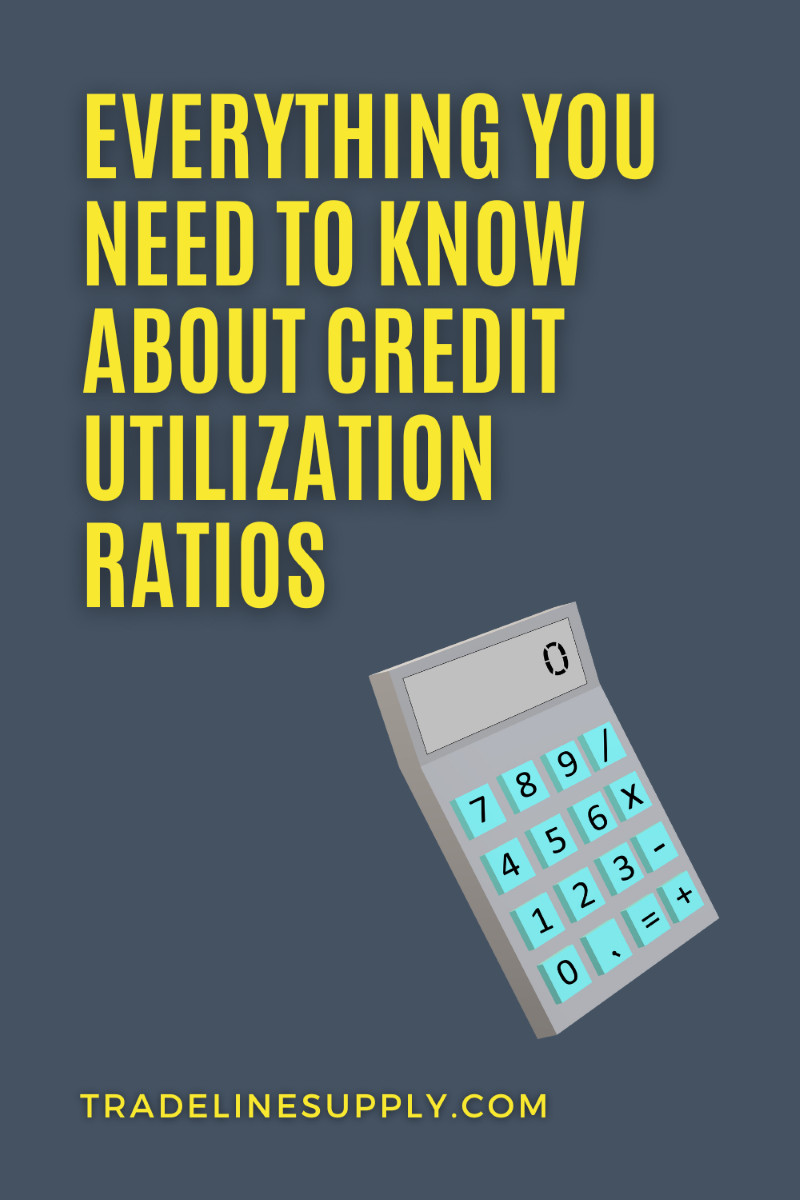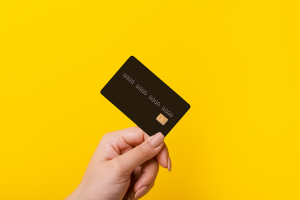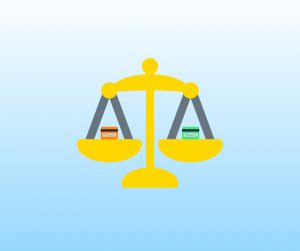Everything You Need to Know About Credit Utilization Ratios

How Credit Card Interest Works
06/22/2022
How to Establish Credit While Young
06/29/2022 Your credit score is an important three-digit number that can have a major impact on your personal finances. But your credit score is just a reflection of your credit usage habits. One of those underlying habits is your credit utilization ratio.
Your credit score is an important three-digit number that can have a major impact on your personal finances. But your credit score is just a reflection of your credit usage habits. One of those underlying habits is your credit utilization ratio.
A better understanding of your credit utilization ratio can help you manage it with your credit score in mind. Let’s explore what your credit utilization ratio is. Plus everything you need to know about managing your credit utilization ratio.
What Is a Credit Utilization Ratio?
A credit utilization ratio is a number that reflects how your current total debt stacks up against your credit limits. Typically, your credit utilization ratio is expressed as a percentage.
Importantly, your credit utilization ratio only takes your credit card accounts into consideration. Credit cards, like other revolving credit accounts, don’t have a set end date. Other debts that wouldn’t be considered revolving due to a fixed end date include personal loans, auto loans, and mortgages.
Credit utilization ratios can be determined for an individual credit card account or all of your credit card accounts. Here’s a quick look at each:
- Individual utilization ratio: An individual credit utilization ratio would include a single credit card. So the amount of credit you’ve used for a particular credit card would be compared to the credit limit for that card.
- Overall utilization ratio: Your overall utilization ratio includes all of your credit card accounts. So, your utilization will include the balances of all your credit cards. That would be divided by the sum of your credit limits.
Although it’s tempting to think that your overall utilization ratio is the more important number, that’s not necessarily the case. If you went by that assumption, you might decide that it’s okay to have some credit card balances sitting near their maximum limit while others balance out your credit utilization ratio.
In truth, both your individual utilization and overall utilization ratios can impact your credit score.
Why Does Credit Utilization Matter?
Credit utilization is one of many factors that can impact your credit score. In fact, your credit utilization ratio is the second most important variable for your credit score. It makes up 30% of your FICO score.
The only variable that has a bigger impact on your credit score is your payment history, which accounts for 35% of your FICO score.
A good credit score can open the door to attractive financing opportunities on major purchases. So, there’s a big incentive to boost your credit score with potentially thousands of dollars on the table in interest savings opportunities.
In general, you’ll want to keep your credit utilization ratio on the low side. Most experts recommend keeping this score below 30% to avoid a negative impact on your credit score.
Credit Utilization Ratio Examples
It’s relatively easy to calculate your credit utilization ratio. If you take the time to monitor your credit utilization ratio, you might be able to spot patterns in your own usage. With awareness and time, you might be able to lower your credit utilization ratio.
Here’s a look at a few examples to consider:
Example 1: Individual Credit Utilization Ratio With Credit Card

We’ll start with an individual credit utilization ratio.
Let’s say that you have a credit card with a $10,000 limit. You currently have a balance of $2,500 on this credit card.
In this case, you would find your utlization ratio with this formula:
$2,500/$10,000 * 100% = 25%
It’s simple to calculate your credit utilization ratio when there is just one revolving credit account to consider.
Example 2: Overall Credit Utilization Ratio
Now, let’s calculate an overall credit utilization ratio.
In this example, the borrower has the following credit accounts:
- $2,500 balance on a credit card with a $10,000 limit
- $20,000 balance on a $50,000 home equity line of credit
- $5,000 balance on a credit card with a $7,000 limit.
You’d start the calculations by adding up the outstanding balances.
$2,500 + $20,000 + $5,000 = $27,500 in balances
Next, you’d add up the credit limits of the accounts:
$10,000 + $50,000 + $7,000 = $67,000
Finally, divide the sum of the balances by the sum of the account limits to arrive at your credit utilization ratio:
$27,500 / $67,000 * 100% = 41%
So, even though the individual credit utilization ratios may be lower for some of the accounts, the overall credit utilization ratio is relatively high.
You can also use our Tradeline Calculator to calculate your individual and overall credit utilization ratios for you.
What’s the Average Credit Utilization Ratio?
According to Experian, the average credit card utilization ratio in the U.S. was 25% in 2020. That’s a full 4 percentage points down from the average of 27% in 2019.
You can run the numbers of your own credit utilization habits to see how you stack up against the average.
Credit Utilization Ratio Strategies
With a better understanding of credit utilization ratios and their importance, let’s explore a few best practices when it comes to efficiently managing your credit utilization ratio. After all, you want to make the most of this opportunity to give your credit score a boost.
Monitor Your Credit Utilization Ratio
If you keep an eye on your credit utilization ratio, you can make sure that things aren’t getting too out of hand. If you spot rising usage, you can implement one of the strategies below to minimize the impact on your credit score.
We explored the math of credit usage above. So, you could regularly calculate your credit utilization ratio on your own. But there are simpler ways to keep tabs on this number.
Many free credit monitoring apps will determine your credit utilization ratio for you. For example, you could sign up for a free Experian account to see your credit utilization ratio every time you check your credit report.
Never underestimate the power of simply tracking things. Without tracking, it can be hard to guess where you stand in relation to your credit utilization goals. But with a regular check-in, you can make sure that your credit utilization ratio is heading in the right direction.
Keep the Ratio Below 30%
When you open a new line of credit, it can be tempting to spend a bit more than you should. But if you want to maintain a good credit utilization ratio, you should keep this metric below 30%. Most experts agreed that keeping your credit utilization ratio under 30% will have a positive impact on your credit score.
If you have a credit utilization ratio above the 30% mark, that could drag down your credit score. Essentially, that’s because this ratio indicates how much debt you are relying on. For example, a credit utilization ratio of 90% would mean you were in danger of maxing out your credit cards. If you are relying too heavily on debt, that could be a red flag to future lenders. That red flag results in a lower credit score.
Raise Your Limit
One easy way to lower your credit utilization ratio without changing your spending habits is to increase your line of credit. That’s right! You can get your credit card provider to increase your credit limit.
Here’s how to make this happen:
- Wait for an automatic increase: Many credit card issuers regularly bump up your credit limit to reward on-time payments. Although this won’t happen right away, it could happen within six months to a year of opening the account.
- Request a credit limit increase: If you don’t see an automatic limit increase come your way, you can request a credit limit increase on your own. You can make this request over the phone or through your credit card issuer’s website. When you make this request, you’ll need to provide a reason for the request. For example, a recent raise at work might warrant an increased line of credit.
- Apply for a new credit card: A new credit card comes with a new credit limit. This addition can help you lower your overall credit utilization ratio.
An increased limit of credit will decrease your credit utilization ratio immediately. But if you start to use the new line of credit, that will also impact your overall credit utilization ratio.
Pay Off Your Balances

If your credit utilization ratio is on the high side, the solution is to start paying off your balances. As you lower your balances attached to revolving lines of credit, your credit utilization ratio will fall.
The good news is there are debt repayment strategies that can help you stay motivated to eliminate your revolving credit account balances. The two most popular debt repayment strategies include the snowball method and the avalanche method.
The debt snowball method is a plan of attacking your debt with the smallest balance first. When you choose to focus on the smallest balance, the goal is to pay off that small balance as quickly as possible. While using this strategy, you’ll stick to paying the minimum for the rest of your loans while you aggressively attack the smallest balance. Once the smallest loan is paid off, you move to the next smallest. As you pay off your smaller debts, the amount of money you have to tackle the next loan will grow.
The debt avalanche method is similar to the snowball method. But instead of focusing on the smallest balance, you first pay off the balance with the highest interest rate. If you have various credit card balances, you’ll likely have some relatively high interest rates mixed into your debt. With that, the avalanche method might be the perfect fit for your situation.
Although paying off debt is easier said than done, it can significantly improve your credit score.
Leave Cards Open
It’s likely you reach for one favored credit card in your wallet. But even if you rarely touch the others, leaving them open can help keep your overall credit utilization ratio low.
If you decide to pursue a debt repayment strategy, you should keep your lines of credit open when you pay them off. Otherwise, a closed card will lower your overall limit and lead to an increase in your credit utilization ratio.
Credit Utilization Ratio and Credit Tradelines
If you are on a credit-building journey, one way to add credit history to your credit file is to add tradelines. A tradeline is simply a credit account that appears on your credit report.
Through Tradeline Supply Company, you can buy authorized user tradelines. Essentially, this means that you pay to become an authorized user on someone else’s credit card. Although this account will appear on your credit report, you won’t have access to using the card itself.
We guarantee that the utilization of our tradelines will always be at or below 15%. However, it’s common for the utilization ratio to be lower than 15%. In fact, most of our tradelines have a utilization ratio of around 1%. So, you can expect a tradeline from us to have a low credit utilization ratio.
The Bottom Line
A lower credit utilization ratio can help you give your credit the boost you’ve been looking for. As you work to improve this metric, consider calculating your credit utilization ratio on a regular basis. Or sign up for a credit tracking service that regularly calculates your credit utilization ratio for you.




